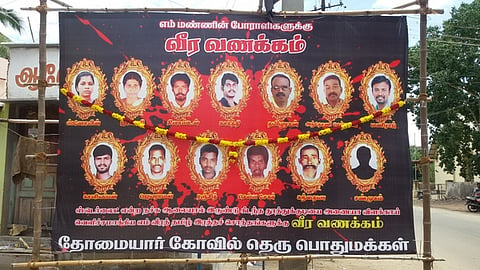The People of Tuticorin versus Sterlite Copper
The road winding through the industrial complex of the State Industrial Promotion Corporation of Tamil Nadu (SIPCOT) at Tuticorin, or Thoothukudi as it is known locally, runs past the multinational mining corporation Vedanta's copper smelting complex, Sterlite, with its ancillary plants and captive power generating units. Almost since the day it was set up in 1996, the plant has been perceived as a death knell by Tuticorin's residents, a source of endless toxins making their way into the air and water. When this writer visited the area, ten days had lapsed since the eruption of a maelstrom of public fury that had played out a short distance away in the heart of Tuticorin. As crowds of anti-Sterlite protestors thronged the city on 22 May, local police fired live ammunition at them, causing people to "drop like birds", in the words of one protestor.
Here, outside the Sterlite complex itself, everything now had assumed an almost zen-like calm. The Tamil Nadu government was forced by the sheer weight of public sentiment to order the closure of the plant, and it was now being guarded like a fortress, with police jeeps and officials milling around it, even as a bulky Varun – the police riot-control vehicle of choice in this part of the country – stood sentinel outside the gate with its water canons at the ready.

